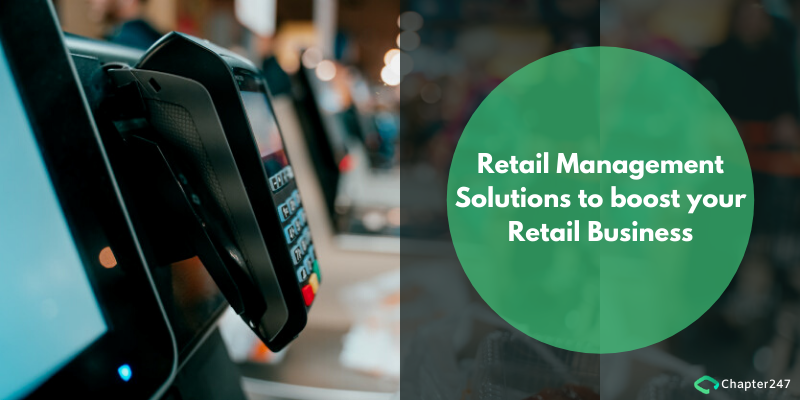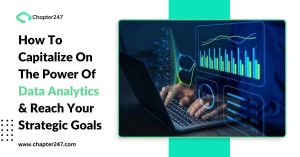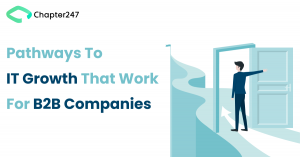It’s high time that retail business embrace technology and when they do, they are offering unexpected advantages to the customers whose impact they will enjoy!
The statement above is not about what retail businesses can do, but what rather they should be doing by now.
The crucial question at this point is whether you are completely aware of what your shoppers and customers expect from your retail business?
We tell you!
Speed– They want to quickly find the item they are looking for!
Resourcefulness– If they have time, they also would love to go for several options which your store has to provide.
Efficiency– A payment system that is fast and secure ensuring safe transactions in a jiffy!
As an afterthought to these three requirements, it is but obvious that retailers think that the customers are demanding too much. But, in reality, their demands are justified especially with tactful and strategic Retail management solutions around you. Not only will these solutions ensure greater customer satisfaction but also will make your business processes much easier to handle.
U.S. retail sales report of 2019 proclaimed that the retail industry is experiencing a trans formative shift due to major modifications in consumer behavior and secondly due to interactively innovative technology that is paving the way towards enriching customer experience, they will not forget. Those stores that understand infusing technology in the retail sector, will surely thrive and that is an assertion.
Serious issues to be addressed in Retail Management
Given that both the ends of the chain – the retailer and the consumer agree that using technology can improve the retail experience, the burden is usually on the retailers to provide the necessary tools to facilitate this shift in thinking. It is quite natural that more and more emphasis will be placed on in-store technology as this is the main point of interaction. Let us first understand the friction points in the entire process and then our recommendations to overcome the issue.
- Poor conversions with native mobile applications.
- Lack of better-organized workforce to enhance internal processes and customer experience.
- Unbearable waiting lines for making payments making the customer go away.
- Poor personalized solutions to help customers purchase at the store thereby sacrificing brand loyalty.
- Short interaction time of customers with the store leading to poor sales.
- Personal address of customer query is poor due to which customers feel left out and ignored.
- Lack of secure digital payment options.
- Providing enhanced AR/VR experience to register customer delight.
Better conversions with Progressive Web Applications
Not all retail organizations who want to succeed can afford to build native apps which can be disappointing from the customer’s perspective. This is where PWA’s come into play because of their innate ability to deliver fast, sleek app-like experience in the mobile web browser using open web technologies. They not just offer improved performances and user-friendliness, but also promises to have a huge impact on mobile web conversions without the need to invest much.
If you want to know more about Progressive Web Application in detail and how it can help to your business, then see here !
Bespoke workforce management software for enhanced customer experience
A great, efficient, and organized team is the quintessence of a good retail business.Research shows that most retailers firmly believe that for a better in-store experience, its team has to be productive and competent. This is where using optimum workforce management solutions is important.
Undertaking tasks manually can be worrisome as it will result in errors and will also waste time. A bespoke workforce management software will provide automated solutions to the tasks usually carried out by the managers in the company like:
- Employee scheduling
- Time sheet recording
- Task allocation
Workforce management automation can help in the following ways:
- The workforce is going to be miffed when they discover that despite them working hard there are pay errors because everything is manual. If the workforce management software is integrated with payroll, the retail team of workers will receive timely and correct pay. This will ensure they are motivated and provide better customer service.
- When you undertake manual scheduling it can be difficult to understand if you are overstaffed or understaffed. But with workforce management software, you can forecast how many employees are needed for specific peak seasons. The software which we design will also provide the functionality to create tailor-made reports like timesheets and schedules. Using the right analytics with the software will go a long way in improving retail experience because your store will have the right people at the right time and at the right place.
- Retail businesses also need to maintain accurate records as they have to comply with local and national laws. Laws also demand retailers to provide information about working practices to employees, unions, and much more. If a business doesn’t let its workforce know about their right, they can be in trouble.
mPOS technology for waiting line management
Around 1.9 billion smartphones will be delivered and shipped worldwide by 2021. With the growth in the use of mobile devices, retailers can adopt mobile POS systems. It is important to remember that they are not merely payment zones or terminals but also a way to augment customer engagement by integrating with back-end operations for wholesome retail management. mPOS can bring in retail revolution and benefit in many ways:
- MPOS technology will help the workforce to come to the shop floor to interact with the customer. They can also engage in other functions like checking the stock level, placing orders for shipping, etc.
- It goes a long way in reducing waiting time, as it is one of the most unbearable circumstances a customer faces. With this technology, customers can pay without waiting in line. It is possible that when the customers know they do not have to spend their time waiting in line, they might also look for more products in the store.
- You can also integrate the mPOS with customer loyalty programs which can help them get personalized offers increasing chances of a sale.
Provide personalized customer experience with Bluetooth Beacon
Beacons are examples of mobile technology put to its best use. If the store app is installed on the customer’s mobile, they can interact with beacons and benefit. Bluetooth beacon technology can improve the retail experience in the following ways:
- When consumers download the retailer’s app and receive updates, retailers can offer personalized offers through Bluetooth Beacon technology. Whenever the customer is at the store, the beacon will automatically send a notification to the app depending on the customer’s location.
. - The technology also assists in checking foot traffic in the store. The technology can record how many Bluetooth devices are in which part of the store. This real-time data can be used by the retailer to shift their staff to the most crowded part so that no customer goes unattended.
Improving customer interaction with Interactive digital kiosks
These kiosks are stand-alone and touchscreen pods in which the customer can access engaging information. It not just provides information about the retail business but also can be used for self-ordering.
When shoppers increase their kiosk time, it will result in a better understanding of the retailer’s offerings. The longer the interaction, the better it is for the customer and the retailer. If a kiosk is placed in your store that is both fun and informative, it will build formidable trust that can further lead to an additional sale.
Addressal of customer queries with personal assistants and chatbots
Smart shopping assistants and chatbots are technologies powered by Artificial Intelligence gaining wide adoption in customer-centric businesses like retail. Personal mobile shopper assistants can be a huge value addition to any retail app. Depending on the underpinning mechanics, personal shopper apps can either be human-based or AI-based. Chatbot solutions are highly advantageous for handling simple requests while allocating the tougher ones to professionals. But when even a simple query doesn’t go unnoticed, the customer is sure to feel happier and satisfied contributing to the enhanced retail experience.
Safe and secure digital payment options with advanced payment system
From Mobile POS to NFC payments, payments have become very convenient with innovative payment solutions available. We can help you infuse a wide variety of third-party payment gateways which can provide customers an effortless way to checkout. Technologies like computer vision, sensor fusion, and deep learning automatically track purchases with virtual shopping carts and charge the customer account after the shopping is done.
Providing enriching customer experience with AR/VR
The true mettle of AR/VR is not just in gaming and entertainment, it can also be competently used in retail providing for advanced shopper experience. IKEA, a furniture retailer, was the first global company to adopt AR as a part of its digital customer experience strategy. The IKEA catalog app can help you to understand how a particular piece of furniture will fit into your interior. The app lets you click photos of the room, add items to the catalog and move them around to see how it goes. A much more advanced version of this technology also requires hardware like wearables, AR-enabled devices like interactive mirrors, fitting rooms, and much more.
Collaborate with Chapter247 for a heightened customer experience
With about 9 years of domain experience, our retail IT consultants have served clients with the best custom software development solutions to the retail ecosystem supporting the businesses across both physical and digital spaces. Our retail IT solutions have helped organizations drive digital transformation, modernize the in-store experience, and improve efficiency through disruptive technologies like mobility, big data, cloud and IoT, and much more.












